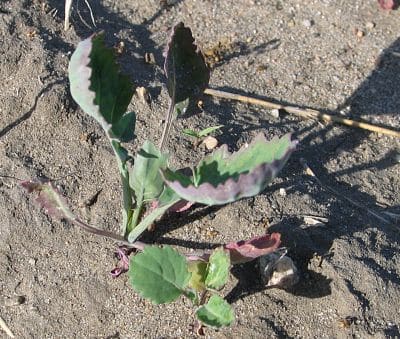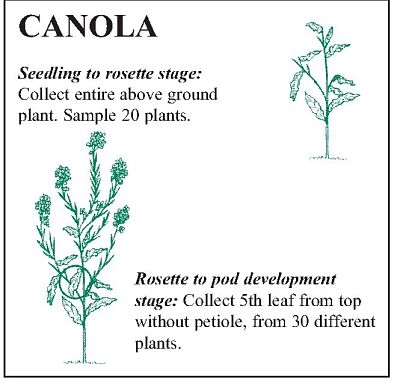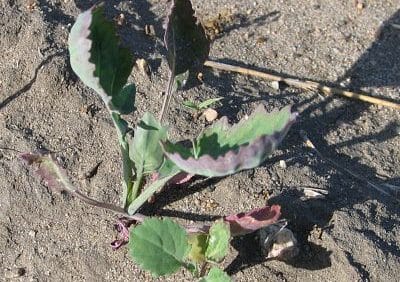 Sulphur deficiency can show up as early as the 4-5 leaf stage in fields that are highly deficient. Deficiency tends to show as yellowing and leaf cupping on new leaves first. Purpling of leaf edges can show up when deficiency is fairly severe.
Sulphur deficiency can show up as early as the 4-5 leaf stage in fields that are highly deficient. Deficiency tends to show as yellowing and leaf cupping on new leaves first. Purpling of leaf edges can show up when deficiency is fairly severe.
A top up with ammonium sulphate may be required in fields that have not received regular sulphur applications. Sulphur content can be highly variable across a field, so while an aggregate soil test may show adequate amounts, many areas of the field could actually be deficient. Comparing tissue tests from canola plants in healthy versus deficient looking areas of the field can help determine whether sulphur is the cause. Contact a soil test lab to get its instructions on how to take and submit a tissue sample. (The image below is one lab’s guideline.) Do tissue tests early enough in the season to provide ample time to take corrective action. Sulphur top ups should be applied before first flower and the earlier the better.
Even if visual analysis or a tissue test suggests an early sulphur deficiency, a top up may not be necessary if you have been applying good rates of sulphur fertilizer. In this case, the sulphur may have simply leached a little lower in the soil profile. Canola may be able to recover on its own from early deficiency when its roots grow enough to access these sulphur reserves.


